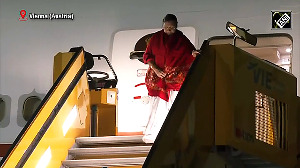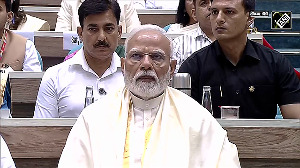Competitive price will face stiff challenge from incumbents such as DD Free Dish
Mukesh Ambani’s launch of JioPhone with cable TV caught the attention of the industry, but analysts feel cable digital and direct-to-home (DTH) players have little to fear from it.
JioPhones are priced at Rs 1,500; users will be able to access JioTV with a Rs 309 per-month plan, which would also give them voice calls and data services.
The price of the phone is refundable after three years. Following the announcement of the launch, share prices of DTH and cable companies slipped last Friday.
But as the dust settles, experts and analysts are taking a cold and hard look at the prospective disruptor.
The JioPhone cable is a casting service. The only distinction from other such services is that it will work on cathode-ray tube (CRT) TVs also.
Casting means the cable will allow users to transfer to the big screen what they can see on their mobile phones.
This is very similar to Chromecast and Fire Stick from Google and Amazon, respectively.
The difference between these devices and Jio’s, other than feature phone compatibility, is the price point.
Chromecast and Fire Stick are in the Rs 3,000-4,000 range; JioPhone TV Cable is expected about Rs 500, bringing the device’s total price to about Rs 2,000.
Unlike others, Jio will also allow a user to stream content from apps (Jio TV, Jio Play) only from JioPhone. This would significantly restrict choice of content.
Currently, even a free service such as DD Free Dish - lifetime available for a payment of Rs 1,500 - has more than 100 channels.
Broadcasters are using it to get a foothold in the free-to-air market, which also overlaps with the feature phone market.
According to a just-released HSBC Global report, “In the analysts meeting, RIL clarified that if the subscriber does not keep the subscription active during these three years, then there will be a deduction in this refundable amount.”
This makes the price proposition almost as economical as a cable subscription, where the user pays an initial installation charge (starting at Rs 1,500) and then a monthly subscription fee.
A senior executive with experience in TV distribution said, “Is anyone really going to use a phone to watch TV for three to four hours? What if the person has to go out?
Does the rest of the family not watch TV at the time? If it can replace a set-top box, why do I need a phone when a Free Dish STB is cheaper?”
There is also a fear that broadcasters currently on Jio TV might pull out if the returns from are not as expected.
“This (pricing) may allow Jio to pull in some revenues from the pay TV market. However, if there is material impact on subscription revenues of broadcasters, then we expect them to pull out,” says a report from JM Financial.
An analyst report from Bank of America Merrill Lynch adds while DTH players such as Free Dish won’t face a negative impact, average revenue per user over the long run might come down for digital cable and DTH players.
Currently, monthly ARPU for them is about Rs 120 to Rs 150.
Another debate is on net neutrality. An analyst from Kotak Institutional Equities said competitors might point out that only Jio apps can be downloaded on its phone, flirting with borders of net neutrality.
“This (pricing) may allow Jio to pull in some revenues from the pay TV market. However, if there is material impact on subscription revenues of broadcasters, then we expect them to pull out,” says a report from JM Financial.
Photograph: PTI Photo











 © 2025
© 2025